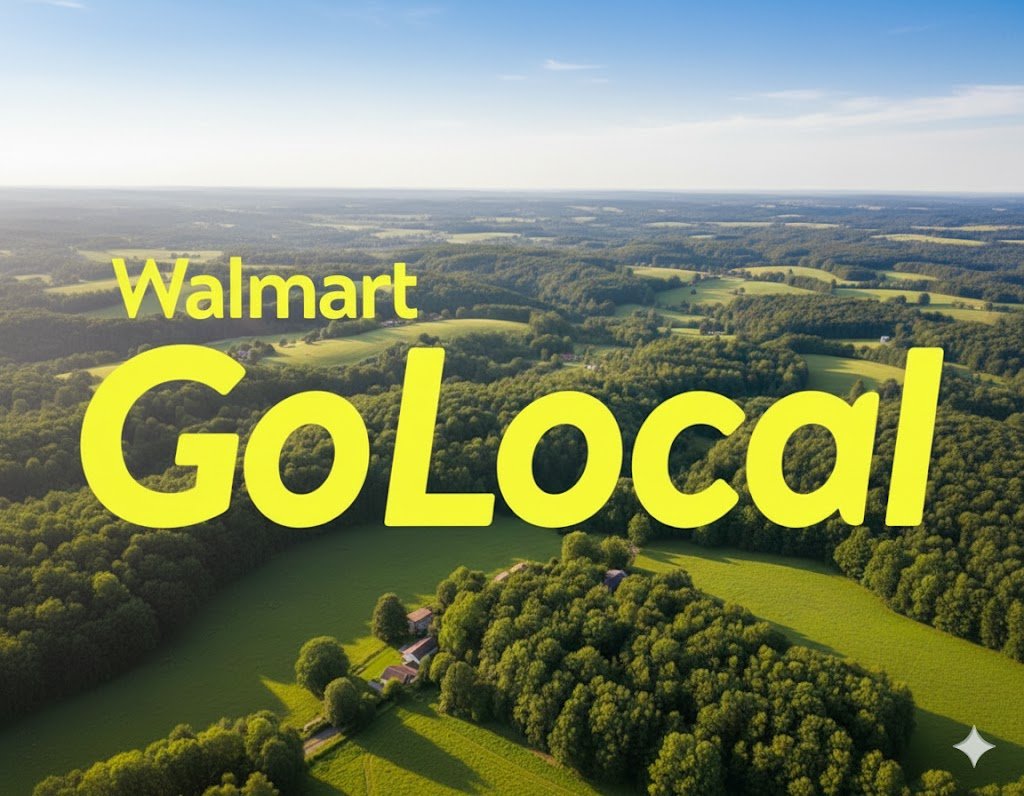
Walmart is expanding GoLocal, its white-label home delivery service, to position itself as a key player in the logistics sector and attract customers seeking fast and efficient solutions.
Since its launch in 2021, GoLocal has grown significantly and now serves 10 retail sectors, including beauty, home goods, and sports. Recently, the platform reached a new milestone: 30 million completed deliveries, a 150% increase from the 12 million recorded in November 2023. This growth has been fueled by strategic partnerships, such as its recent integration with IBM’s order management system, making it easier for more businesses to adopt the service.
Walmart created GoLocal as a third-party delivery service, initially relying on its own employees, independent contractors, and logistics companies. Its first partner was Home Depot, and since then, it has added brands like 1-800 Flowers, Books-A-Million, Hibbett, Sur La Table, UrbanStem, and Sally Beauty.
“There isn’t a single industry that hasn’t inquired about our delivery solutions,” said Rina Hurst, Vice President of Walmart GoLocal. The company offers options such as ship-from-store, same-day delivery, and customized solutions for retailers looking to strengthen their logistics without relying on traditional carriers.
The Last-Mile Competition: A Sector in Transformation
As Walmart expands GoLocal, competition in the last-mile delivery space intensifies. Amazon, which surpassed UPS and FedEx in 2022 to become the largest delivery operator in the U.S., processed 5.9 billion deliveries in 2023, averaging over 16 million daily.
However, Walmart isn’t trying to replicate Amazon’s model, which focuses on its sellers within its platform. Instead, GoLocal targets retailers who need to enhance their delivery networks without building their infrastructure.
Changes among significant carriers have also impacted the logistics landscape. UPS announced it would cut its shipping volume with Amazon by half by 2026, while the U.S. Postal Service stopped handling UPS deliveries under its SurePost program. Additionally, uncertainty in global trade, such as new U.S. tariffs on Chinese goods (home to giants like Temu and Shein), could disrupt the capacity of some transportation networks.
Despite the emergence of new companies like UniUni, Veho, OSM, and Roadie, the major players—Amazon, UPS, FedEx, and USPS—still dominate the market. However, Walmart is betting on its infrastructure as a competitive advantage: with 4,700 stores and 16,000 pickup points across the U.S., the company has a geographic reach that’s hard to match.
Technology and Efficiency: The Key to GoLocal’s Growth
To optimize deliveries, Walmart has implemented artificial intelligence in route planning for its Spark drivers, which use independent contractors for deliveries. Thanks to these improvements, GoLocal has tripled Sally Beauty’s delivery volume while maintaining consistent operational efficiency.
Additionally, a consumer electronics company—whose name has not been disclosed—achieved nearly 100% on-time delivery rates, significantly reducing cancellations and returns. According to GoLocal’s data, its same-day delivery on-time rate is 98.5%.
The last-mile delivery sector had changed dramatically since 2020 when the pandemic tested the logistical capabilities of many companies. Today, options like drones, one-hour deliveries, and on-demand platforms like DoorDash and Uber have transformed consumer expectations.
“Retailers are becoming more strategic with their value proposition,” explained Hurst. “If a customer needs a product immediately, we can charge a premium fee. But if their priority is a scheduled delivery for tomorrow or a few days later, we can offer alternatives that foster long-term loyalty.”
Reflection from Orotex Liquidation: What Does This Mean for the Industry?
The growth of GoLocal is an example of how large companies are betting on logistics optimization as a key factor in customer experience. Wholesalers and distributors must evaluate new strategies to improve their operations in a context where consumers expect speed and flexibility.
Understanding these trends is crucial for companies like Orotex Liquidation, which operates in the wholesale space. Efficiency in last-mile delivery can make the difference between a repeat sale and a customer looking for alternatives. While giants like Walmart innovate with intelligent routing and customized options, wholesalers must consider adapting to an ever-evolving market through strategic partnerships or optimizing their distribution chains.
The logistics challenge isn’t just about speed—creating a smoother, more reliable shopping experience. As the industry continues to evolve, staying ahead of these trends will be essential for businesses aiming to thrive in a competitive landscape.

